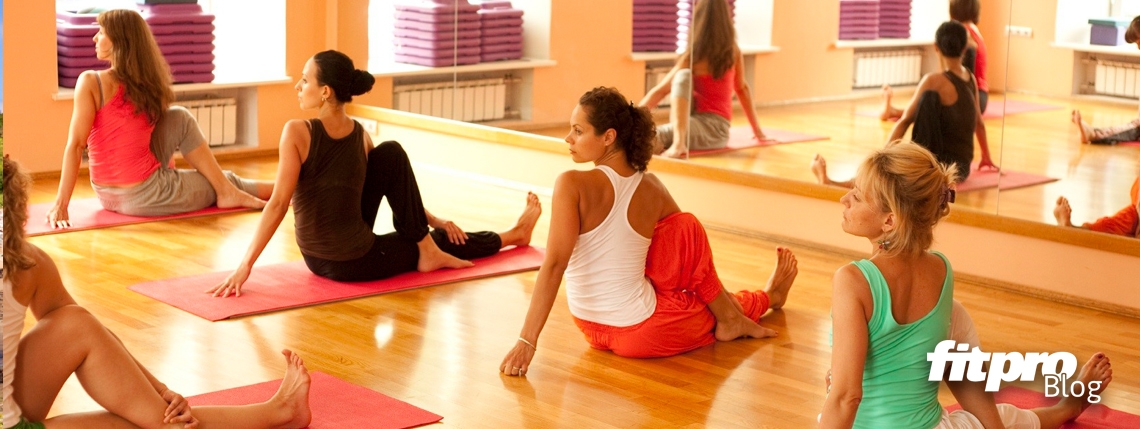Qualifying as a Pilates instructor is the first step to living the life you want. So, asks Ingrid Thompson, what might the next steps look like?
Karly dreams about starting her own Pilates studio. Now that she’s fully qualified as an instructor, the idea of her own facility is an exciting one. Her vision is to bring Pilates to as many people as possible, while also making enough money to live her desired lifestyle. How can she do this? She feels like she has so many options.
Freelancing
Many of the graduates from earlier courses work in other studios. Her friend has an ABN and teaches Pilates in three different studios as well as at a gym. She says she loves the flexibility and variety of working across a few different studios and with all the different clients. Getting an ABN was easy, she just had to follow the prompts on the ATO website (ato.gov.au).
An extension of the freelancer option is to teach in people’s homes. A group of friends can get together and arrange regular Pilates sessions in one place, or individuals can have private sessions in their own homes. Being a freelancer takes a bit of organising to get your days and times lined up and establish a base of regular clients, and once it’s in place, it can be liable to change at the whim of facility owners or private clients. Freelancers are responsible for their own taxes and superannuation. Those who do it and enjoy it wouldn’t choose anything else. Karly is definitely considering starting out as a freelancer and seeing how it goes before potentially taking the plunge and running her own studio.
Studio owner
It would be great to one day have her own studio and, if she does, there are essentially two options: buying an existing studio or starting her own.
- Buying an existing Pilates studio
For whatever reason, from time to time people sell their Pilates studios. Buying an existing studio can be a great option. Karly could buy a studio that has been operating for a while. That way, as long as she did her due diligence on the books of the business, there should be existing clients, regular timetables established, cash flow, marketing collateral, and everything else that it takes to run a successful business. One of the issues Karly is aware of is rent; it can be one of the most expensive parts of having a bricks and mortar studio, and signing a lease is a long-term commitment. Someone once told her, “It’s easier to get out of a marriage than it is to get out of a commercial lease.”
- Starting from scratch
Some people just love the challenge of doing it all themselves. Karly wonders whether she is the sort of person who could start her own business completely from scratch. Part of her Pilates instructor training involved observing qualified instructors working with their clients in a Pilates studio. Two things Karly paid particular attention to during the observations were:
- The instructor’s style of teaching – Karly wants to emulate the people she most admires so she is paying particular attention to their style of teaching, cueing and working with their clients
- How the studio operates – while Karly doesn’t know much about running a business, she knows that there is more to it than just showing up and teaching Pilates
After freelancing for a while, Karly has come to the realisation that, yes, she truly wants to create her own, unique Pilates studio. She knows she is a good instructor and her clients tell her that her classes are making a real difference to them. However, she doesn’t feel quite ready to go it alone yet. While continuing her freelance Pilates instructing, Karly works as a receptionist in a busy chiropractic clinic and then in a physiotherapy clinic that also offers acupuncture. She’s earning money and is learning as much as she can about the operations and admin side of things.
However, despite observing at the other studios and gleaning some insights from her receptionist work, Karly is aware that she:
- Doesn’t really know how to make money and doesn’t fully understand finances – she’d rather be helping her clients
- Doesn’t have a plan or a roadmap, and doesn’t know how to make one
- Isn’t sure of the best way to sell herself and find new clients – yes, there’s advertising, marketing and SEO, and, of course, everyone says you have to be on Instagram, Facebook, Twitter and have a website – but what’s the best way to invest her time and resources?
- Is frightened of failing – what happens if it doesn’t work? Will she look silly? Will people say, ‘I told you so’?
The 30-second article
- Once qualified as a Pilates instructor, you have the option to teach in studios and private homes, or to run your own studio
- Setting up your own business isn’t for everyone, so it’s important to consider whether you know what you’re getting yourself into and whether you are truly capable of it
- Consider your ideal clientele and what specific niche market you might want to cater to
- A passion for instructing Pilates doesn’t always correlate with business savvy, so before jumping headlong into running your own Pilates business, it’s critical to develop an understanding of the basics of business structure, finances and marketing
Starting your own Pilates business: seven essential elements
Having the right foundations in place is critical. These seven essentials are the basis for creating a successful Pilates business.
1.You
Your business starts with you. Who are you to start a business? Some people are more suited to starting a business than others. There are two key questions to ask yourself: firstly, do you know what you’re getting yourself into? and, secondly, are you truly capable of it? Specifically, you also need to consider:
- Are your personal finances in order?
- What is your big ‘why?’ – the real reason that you want to start your own business, besides making money
- Are you action-oriented? Are you resilient? Tenacious? Consistent? – these are just a few of the key characteristics of successful business owners
Who you are as a person will directly correlate with the success of your business.
2. Your idea
Your idea is Pilates, but what sort of Pilates? There are many options and your Pilates studio can stand out from all the others by having a specialty or a niche. This might be mat, reformer, post-injury, pre- and postnatal, or another specialist group. Carving a niche to serve a particular need in the market can be one way to really improve your chances of success in business and can help position you as the ‘expert’ in that particular field.
3.Your clients
Who is your ideal client? What do you know about them, and what do you need to know about them? Every business needs to create their ideal client avatar. There are four aspects of an ideal client profile to consider:
- Geographic
- Demographic
- Psychographic
- Behaviour profile
Once you identify your ideal client, you’ll be in a position to consider how and where you will find them.
4. Your brand
It can be easy to think that branding is only for big businesses, but in fact defining your brand is just as important for small businesses. Your brand is your story. Your clients are looking to you to stand for something and tell your story. This is one of the strengths of a small business – you get to say what is important to you personally, and your clients can connect with that on a more intimate level than is possible with a big enterprise.
5. Your structure
When you start a business, there are compliance matters and legalities to adhere to. It’s critical to stay on the right side of the law and to set solid foundations for your business. It’s also important to understand the pros and cons of the different structures available and the impact they can have on your business.
6. Your finances
Over time, I’ve found that many of the people who wish to start their own business are not really numbers people. How much will it cost to get started? Where will the money come from? When you are running a business, it is important to understand some of the financial basics: the difference between revenue and profit; how to calculate whether you are making a profit or a loss; and how to manage cash flow, among other things. Even something as seemingly simple as deciding how much to charge for your service offerings can take considerable time and research.
7. Your marketing
Marketing is all about attracting and retaining clients. A few essentials in marketing:
- Create a client journey map that will help you identify the various points of contact where your clients interact with your studio; I like to think of them as ‘moments of truth’
- Advertising and social media are important elements for communicating with your clients, and the available technology is constantly changing
- Your underpinning philosophy is driven by your values – both personal and business
- No matter what medium you are using, there are fundamentals that bring clients to your business and then keep them coming back – taking time to develop your marketing plan will enhance your chances of success
The choice is yours
Pilates is a wonderful idea for a business venture because it enables so many different options. Regardless of which route you take, ensure you give yourself the best chance of success by having the right foundations in place.
This article has been produced in conjunction with Australian Fitness Network magazine
About the author
Ingrid Thompson is the founder of Healthy Numbers Pty Ltd. Author of So You Want to Start a Business, she has combined her business savvy with her love of Pilates to create the online programme ‘So You Want to Start a Pilates Business’.
Where next? Check out
Are you a Pilates instructor looking for cover?
View our Pilates instructor insurance here.







